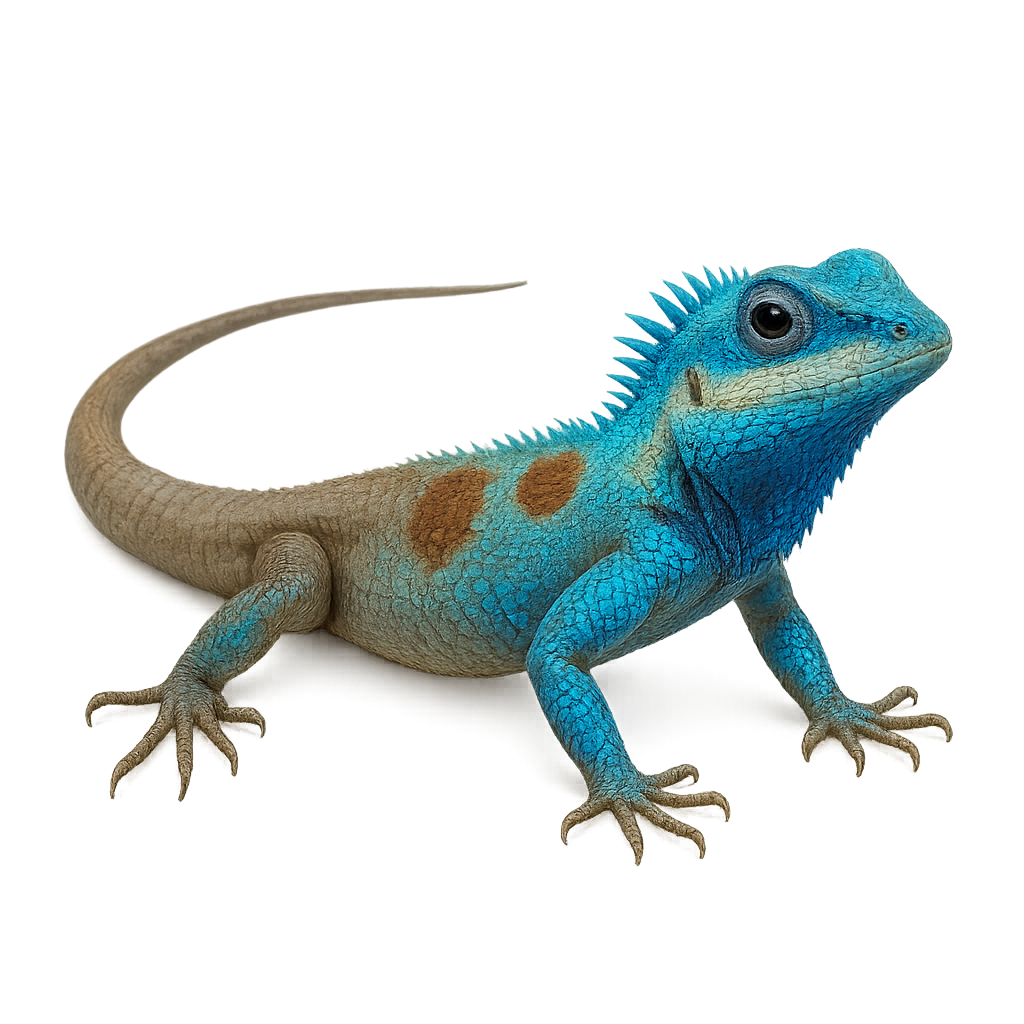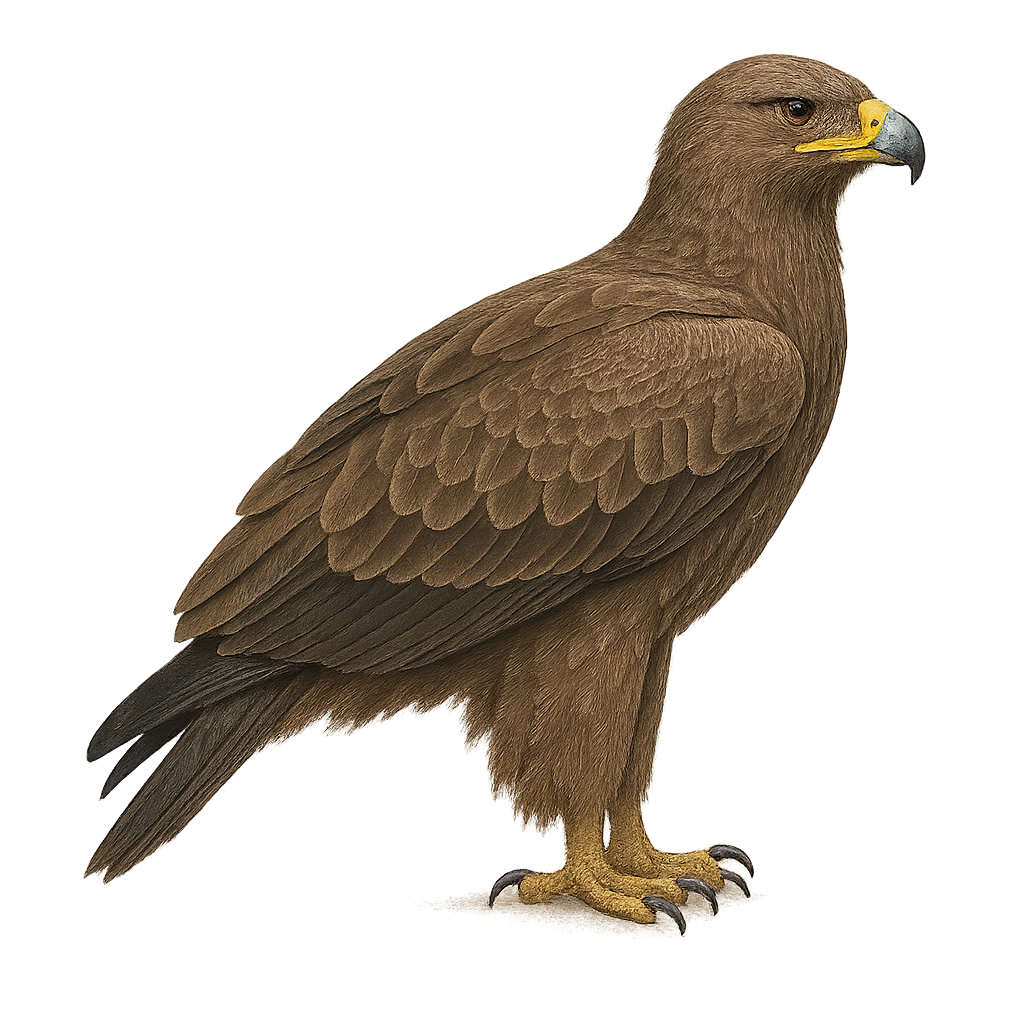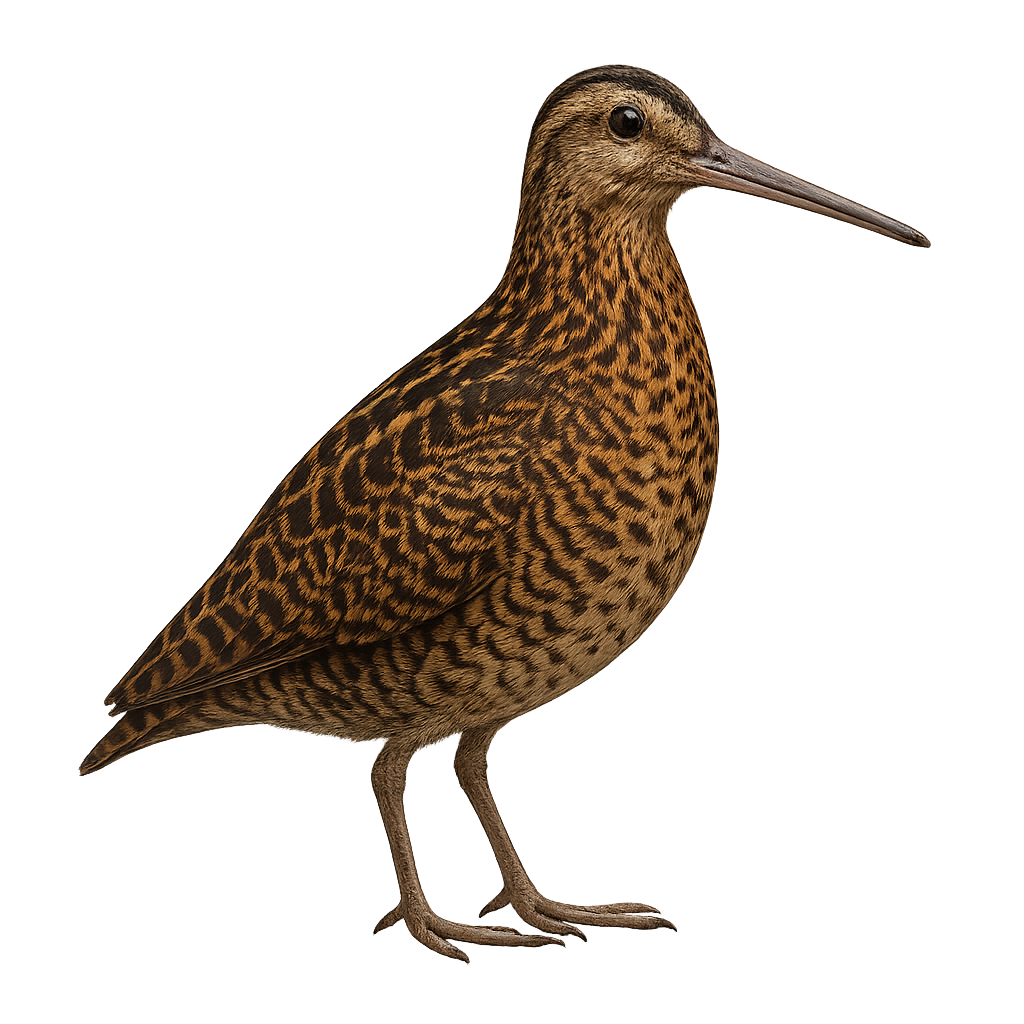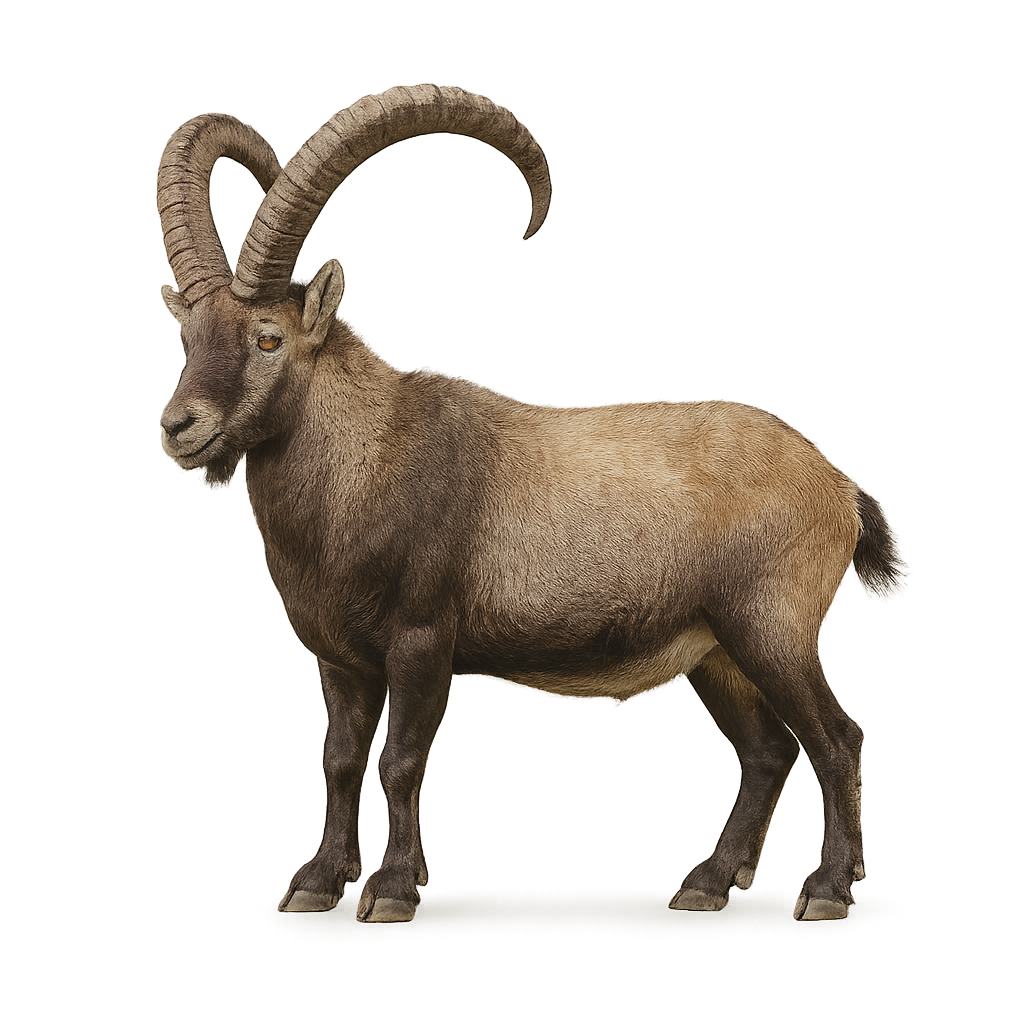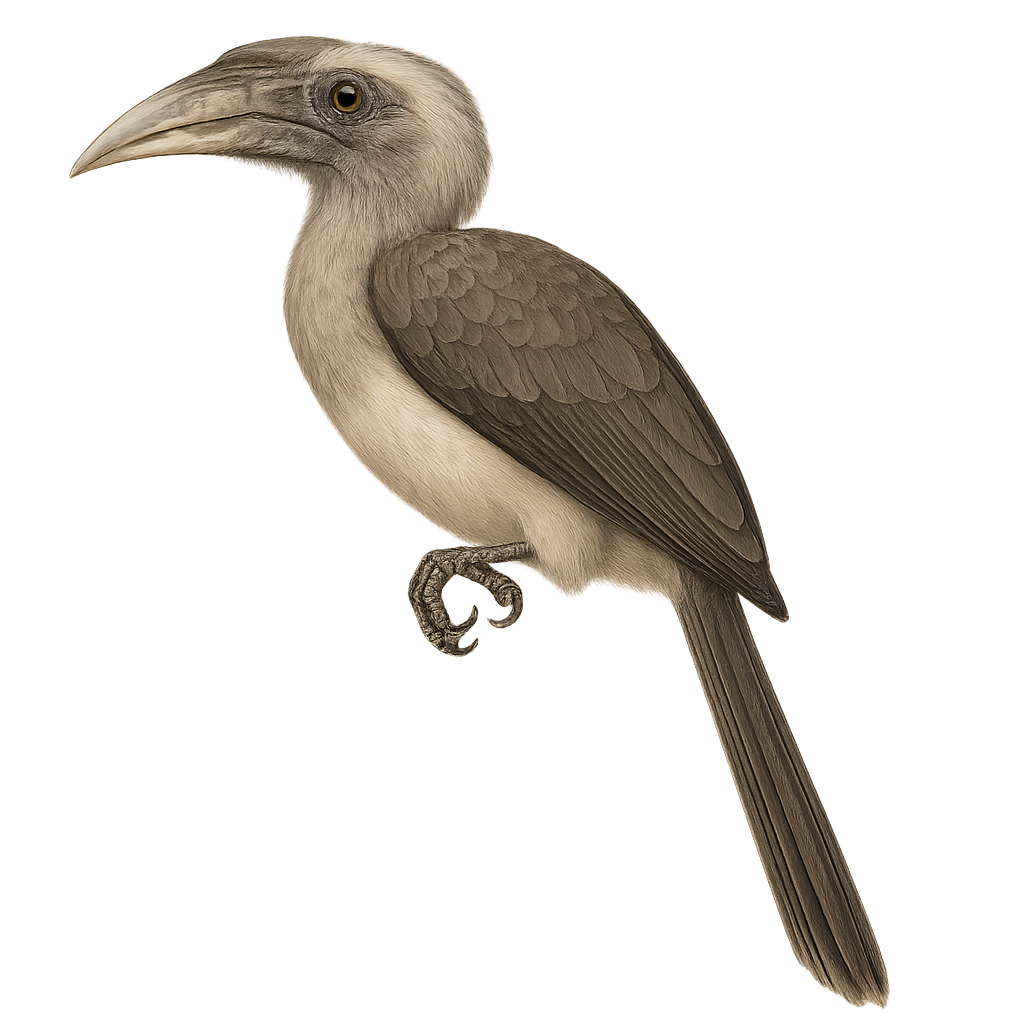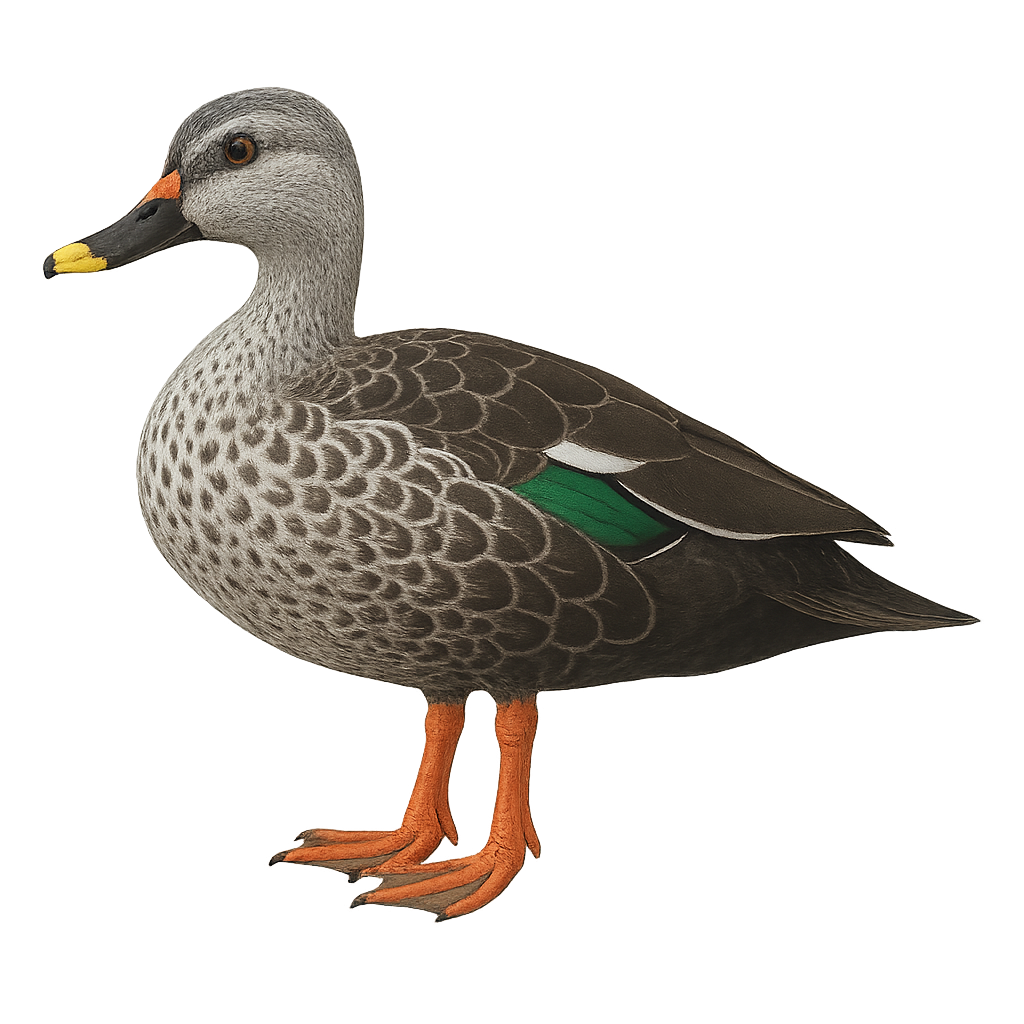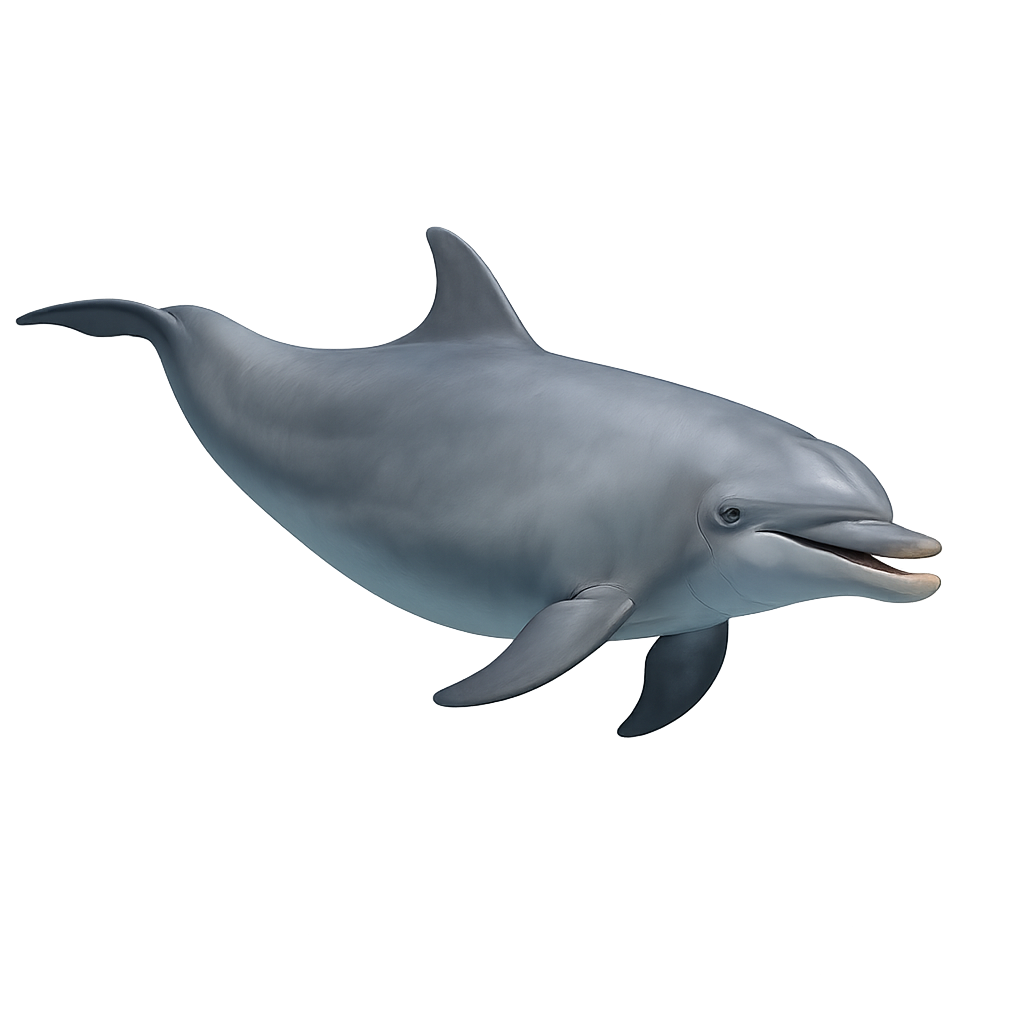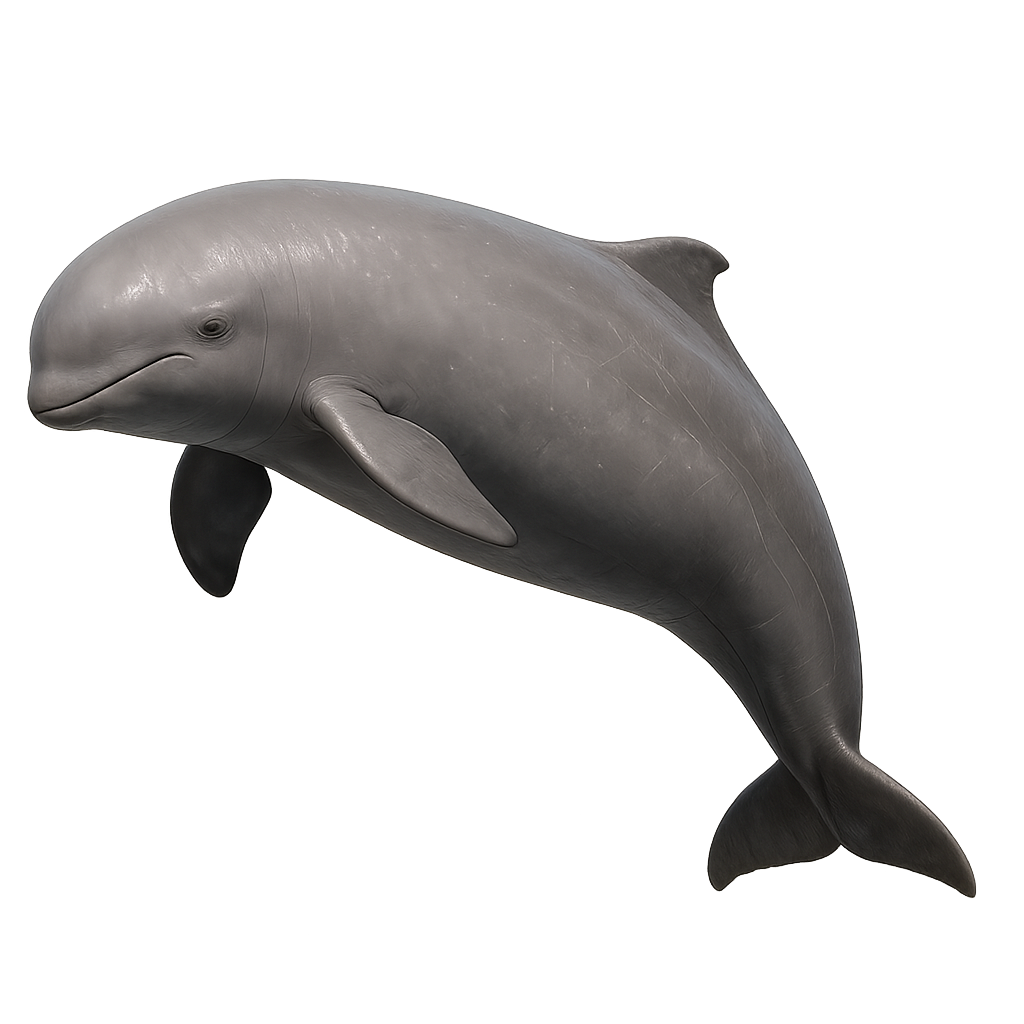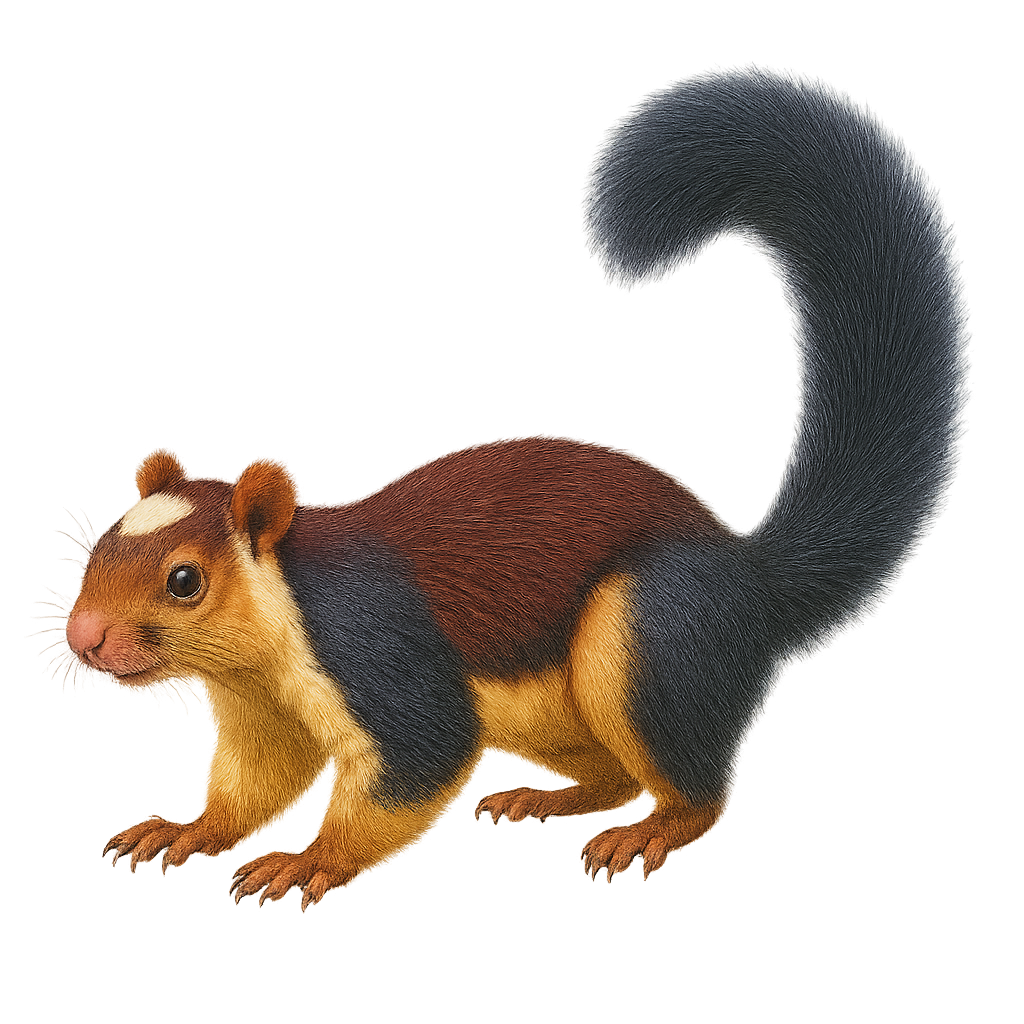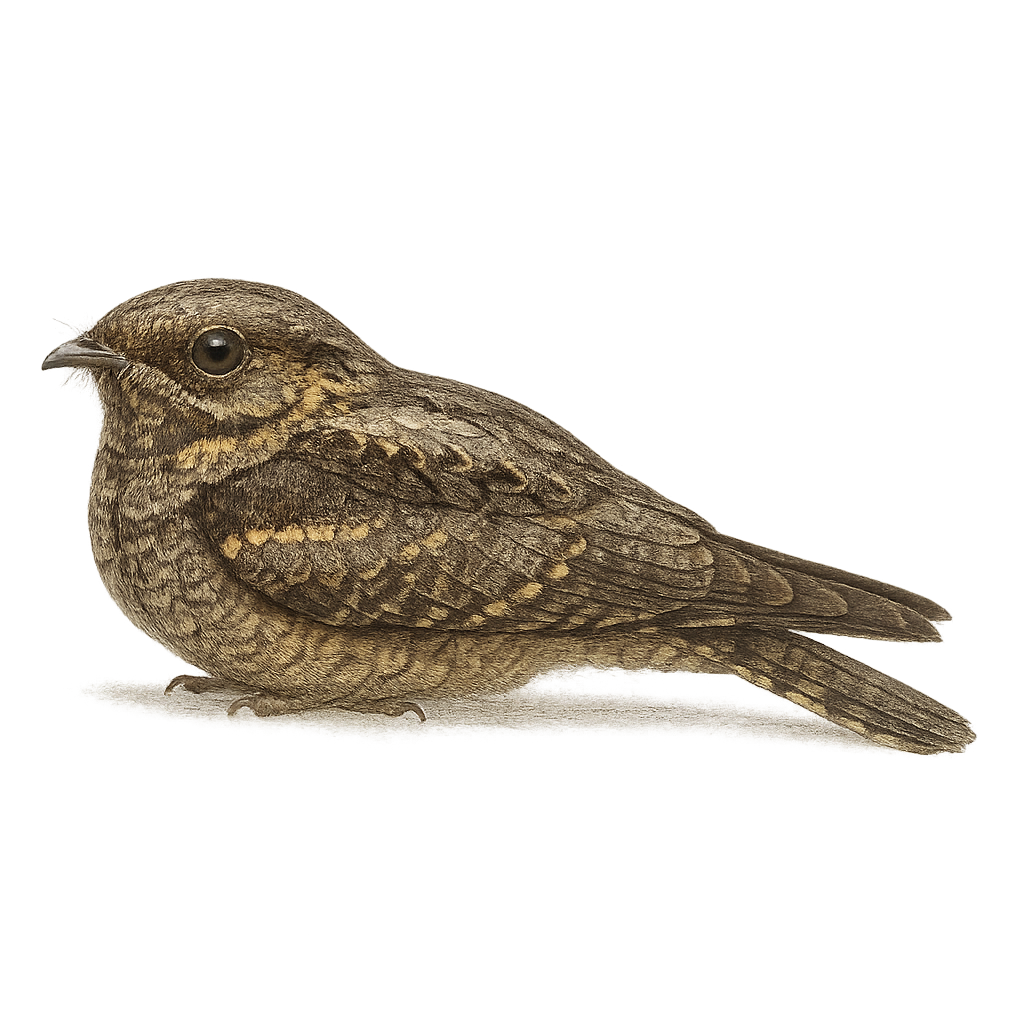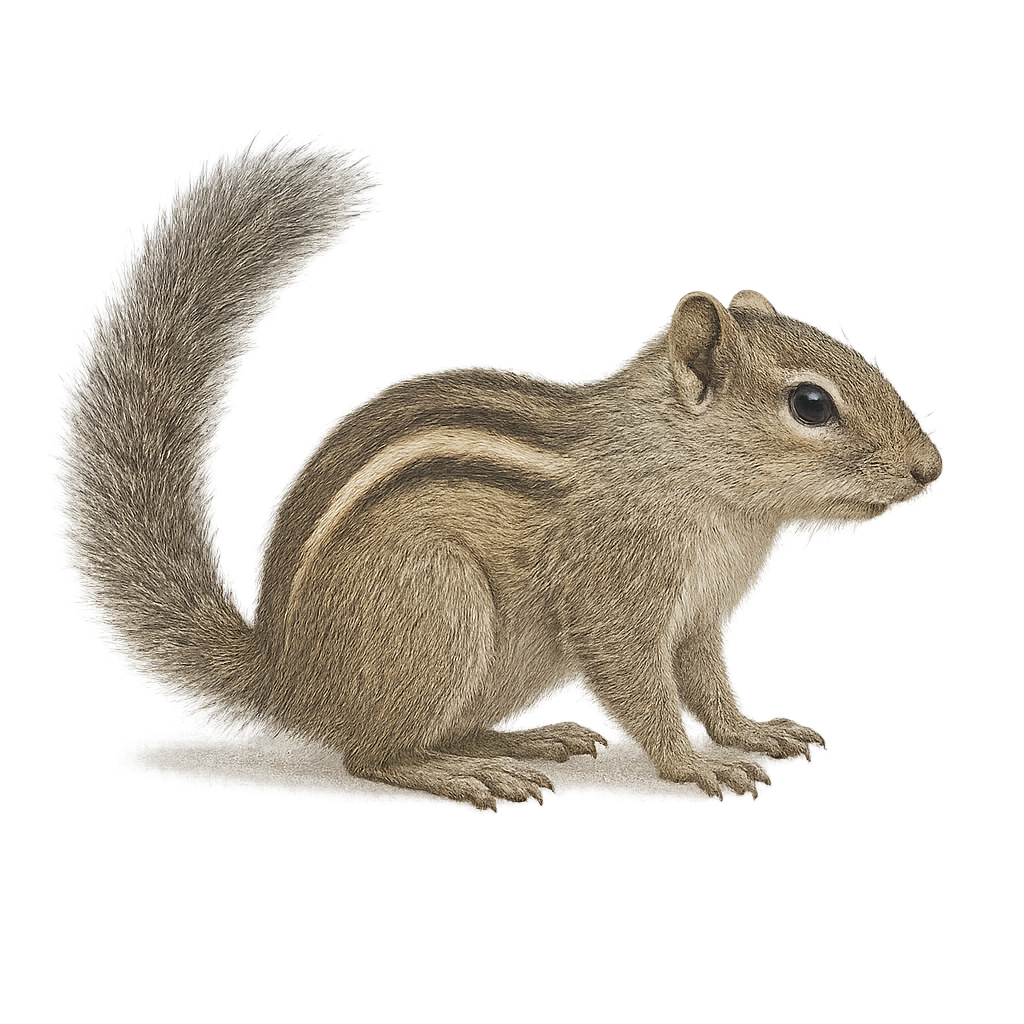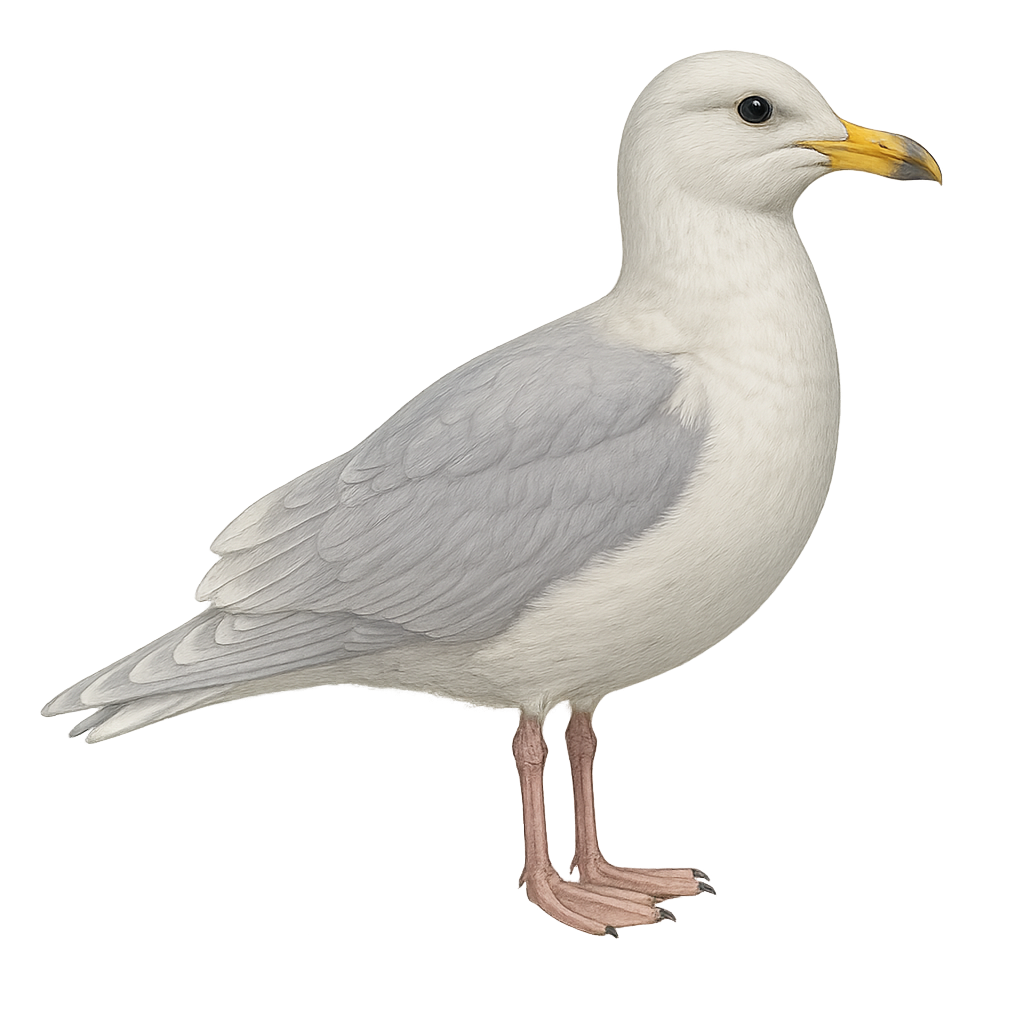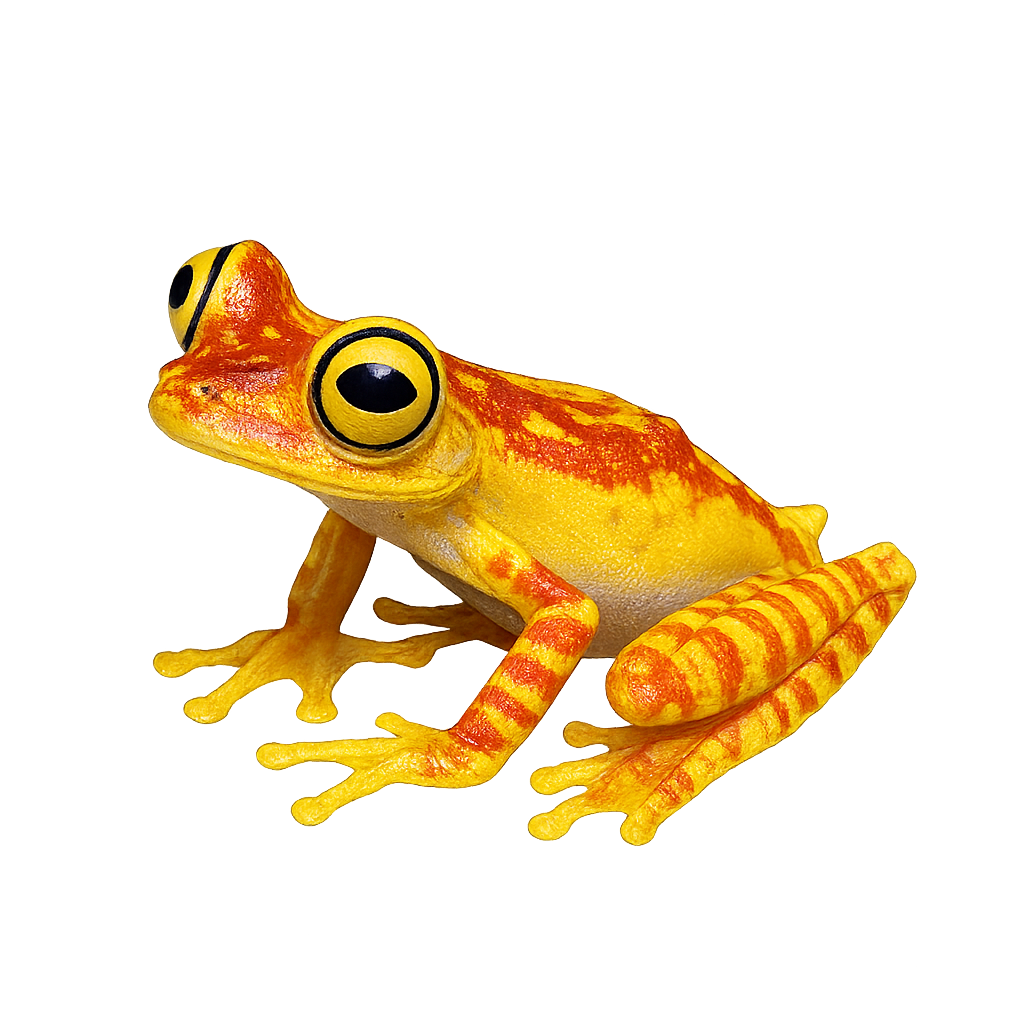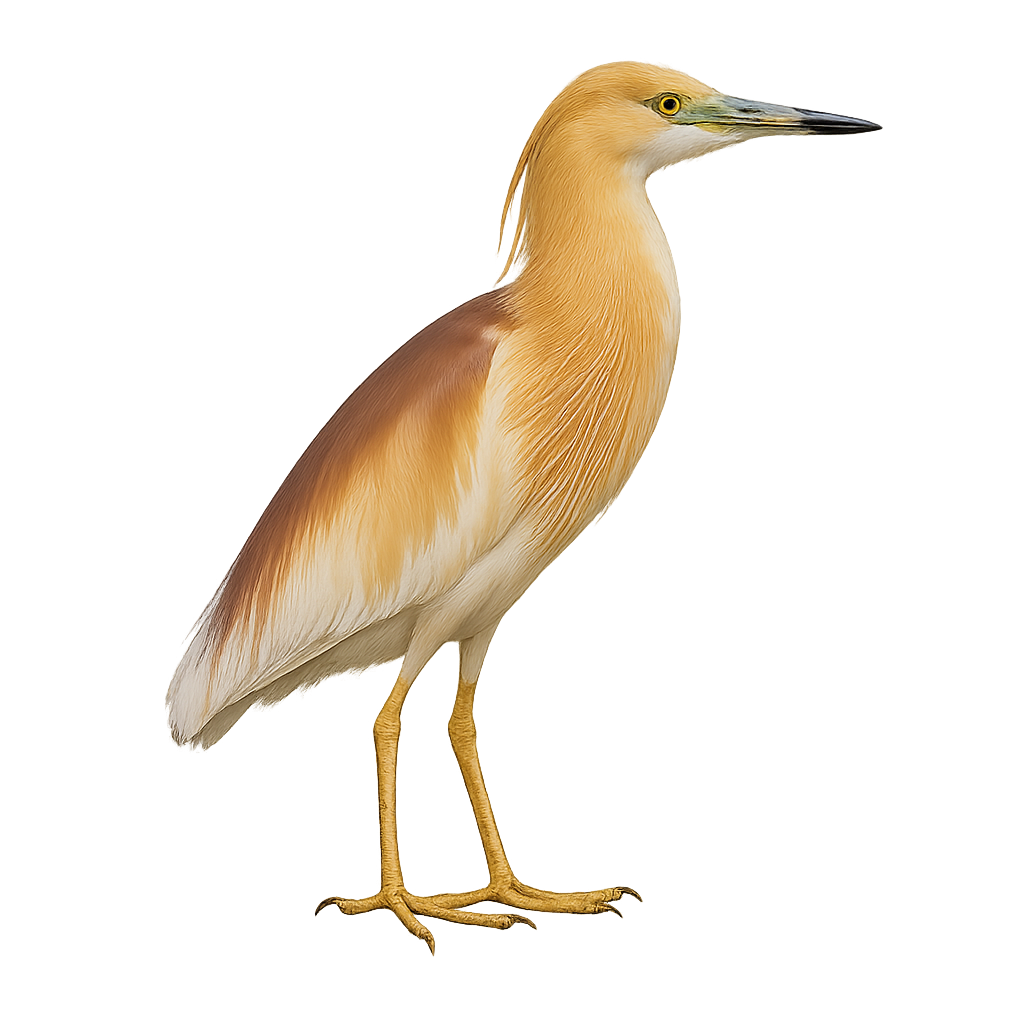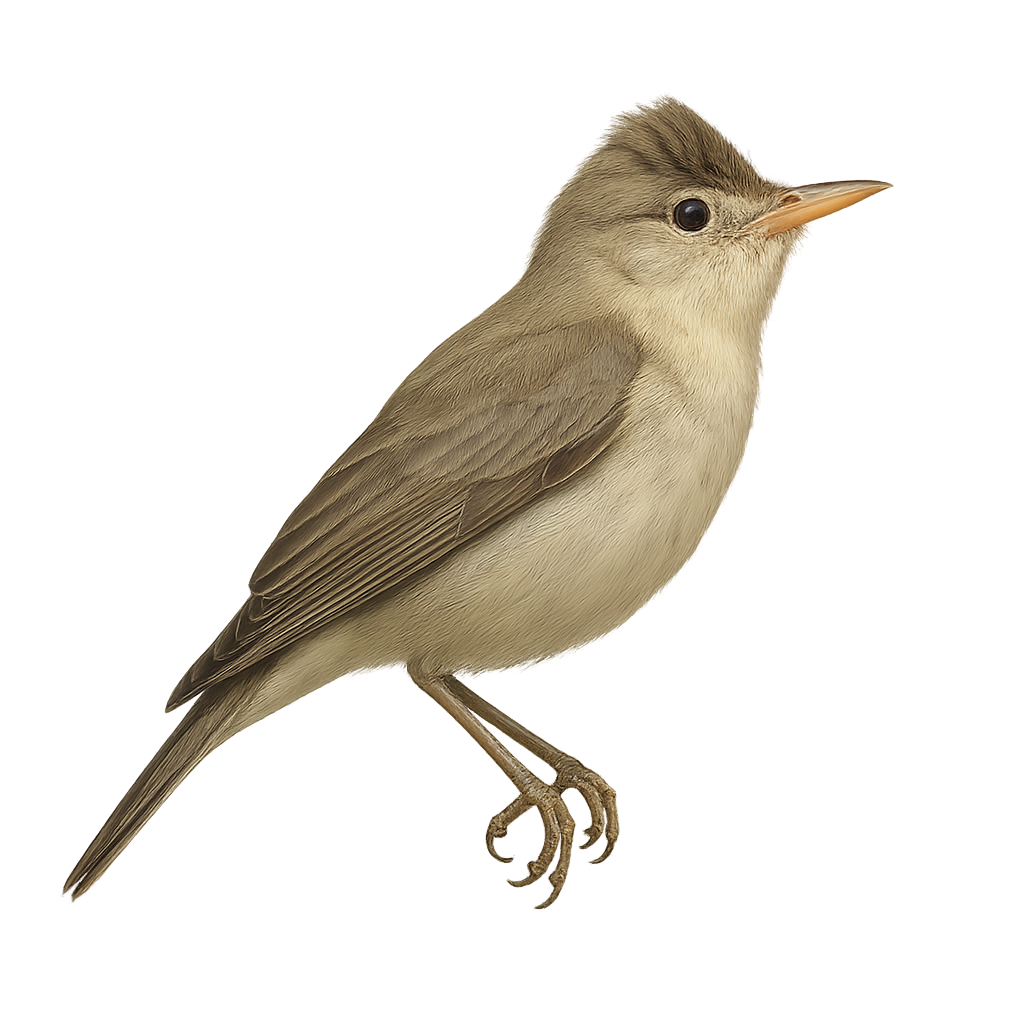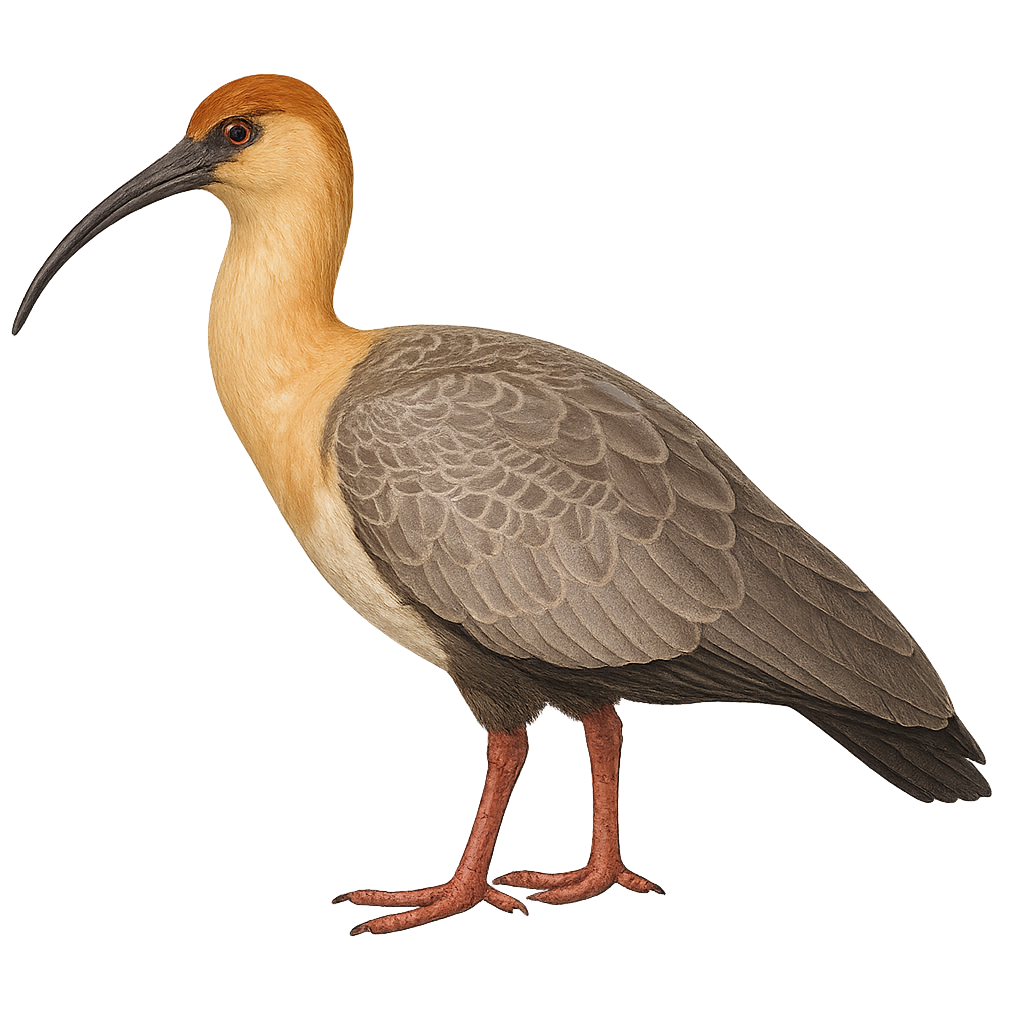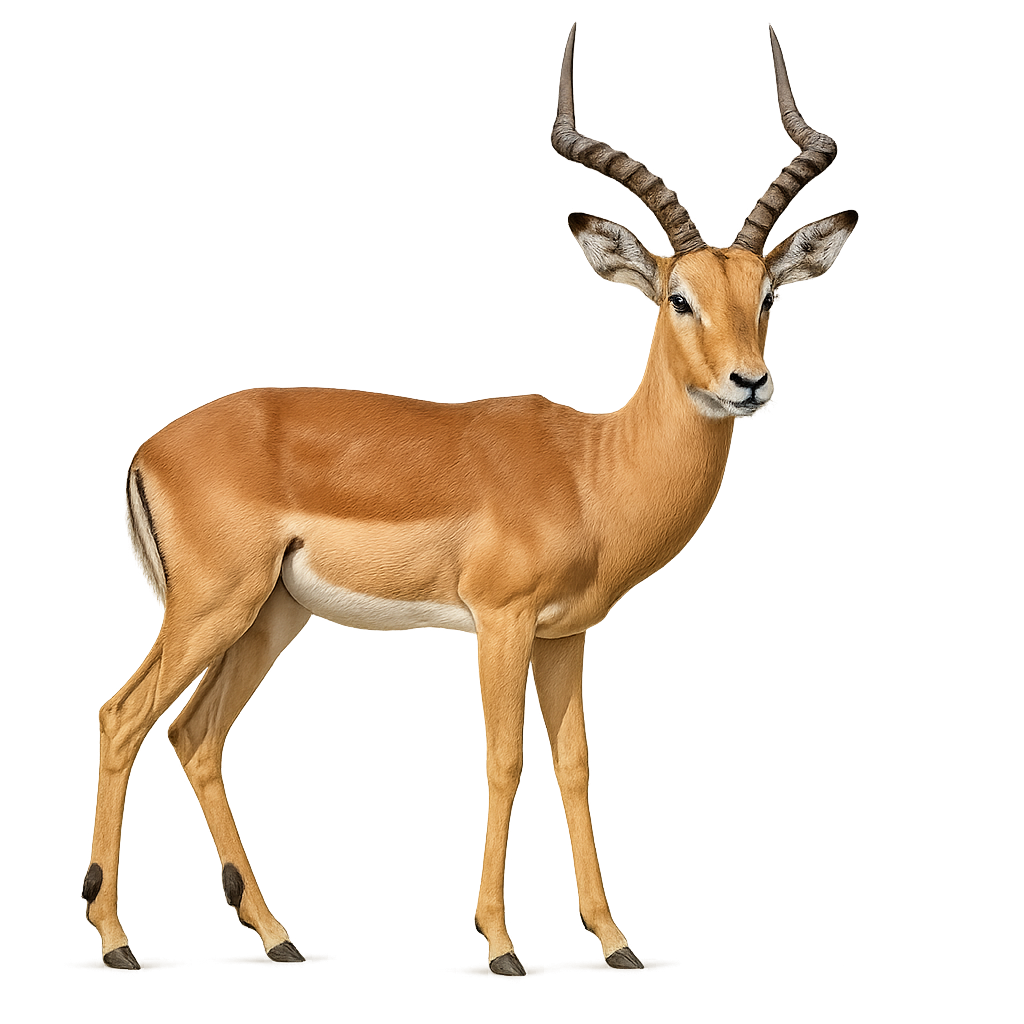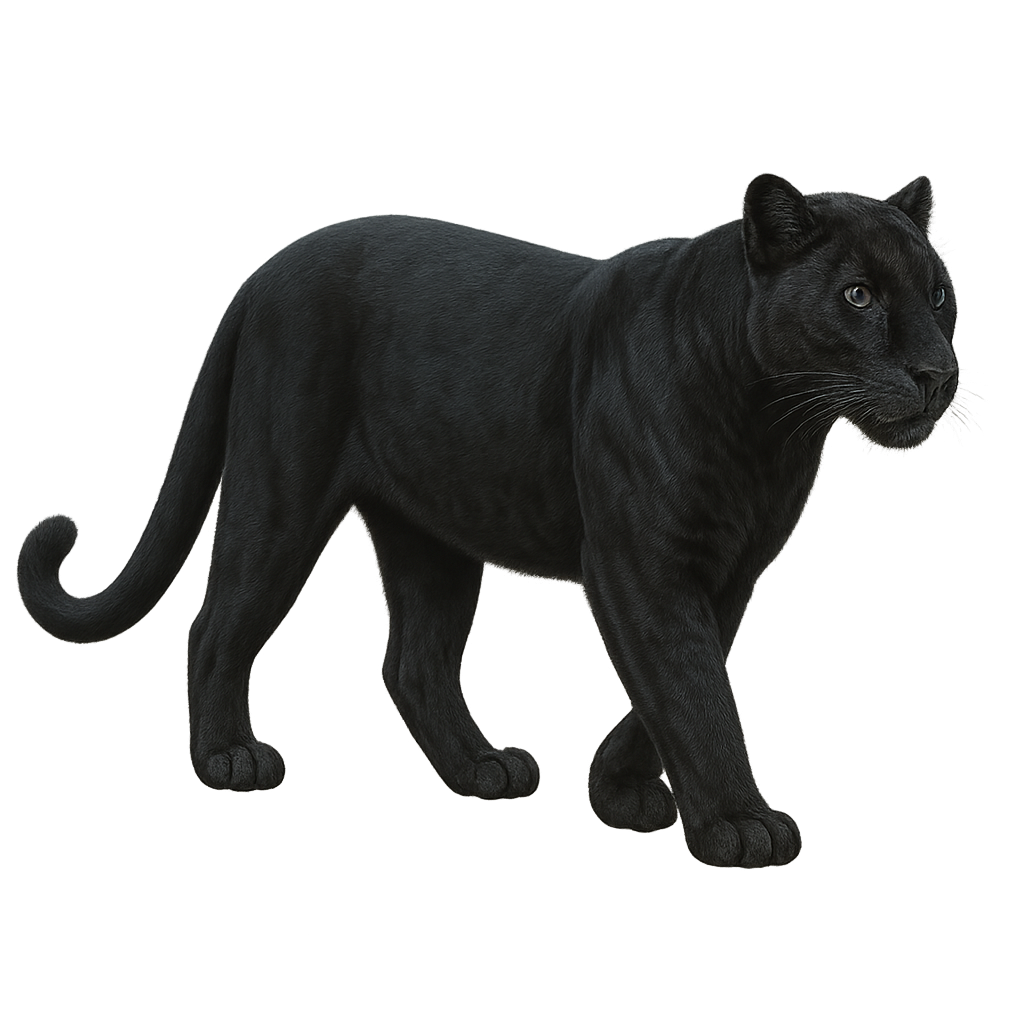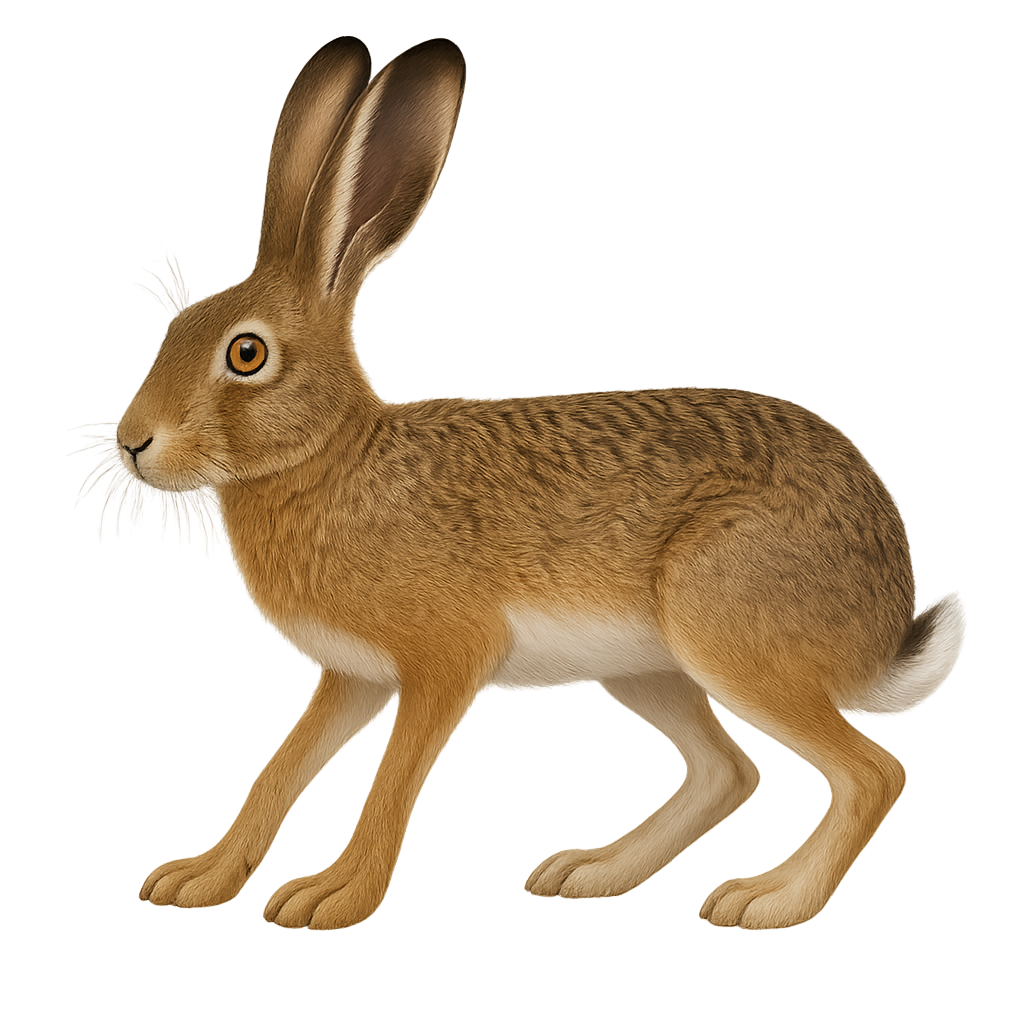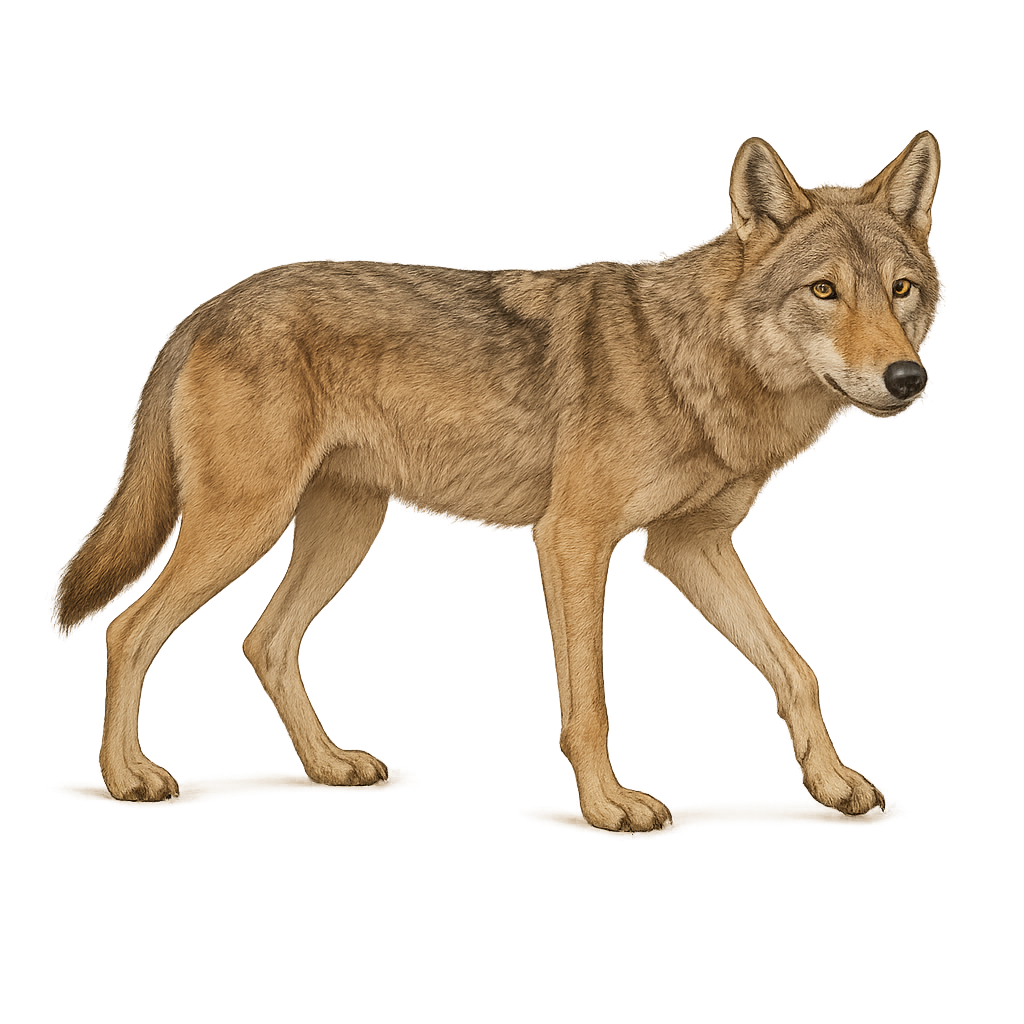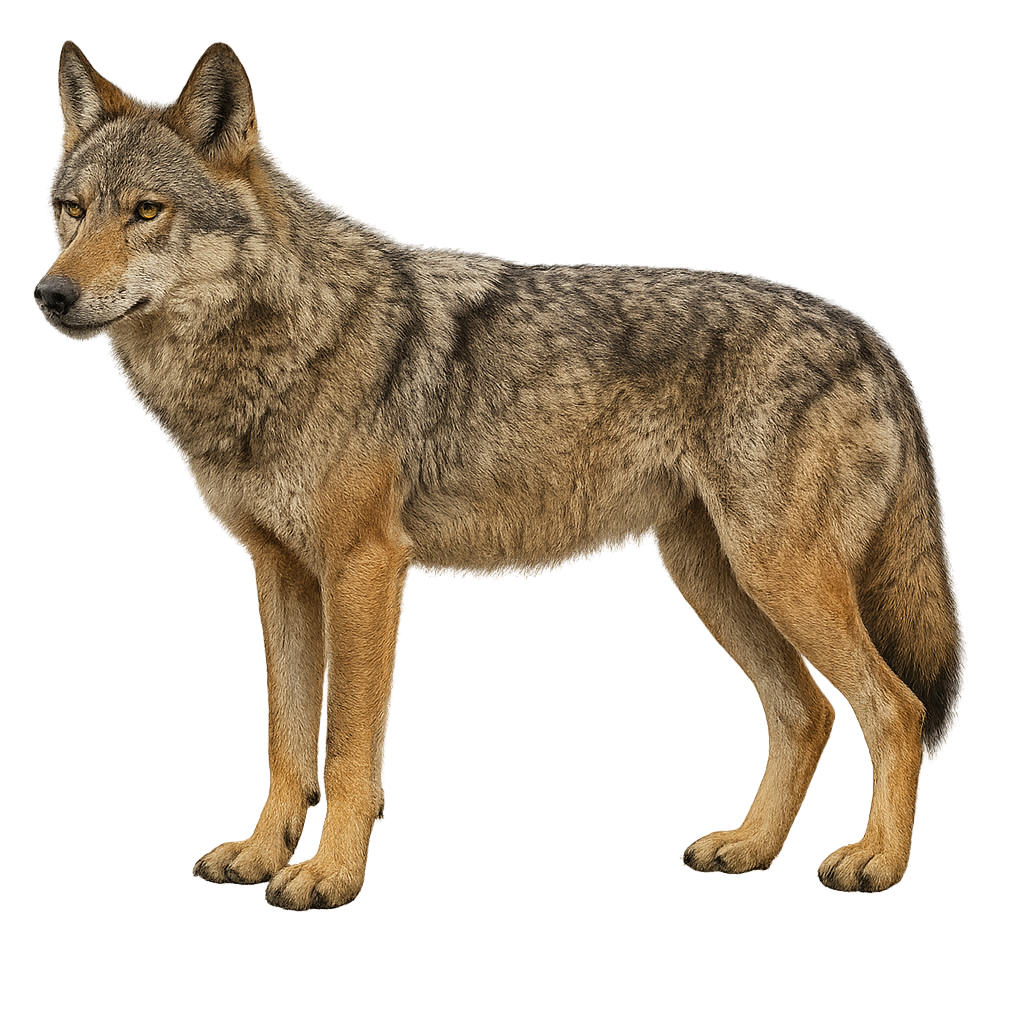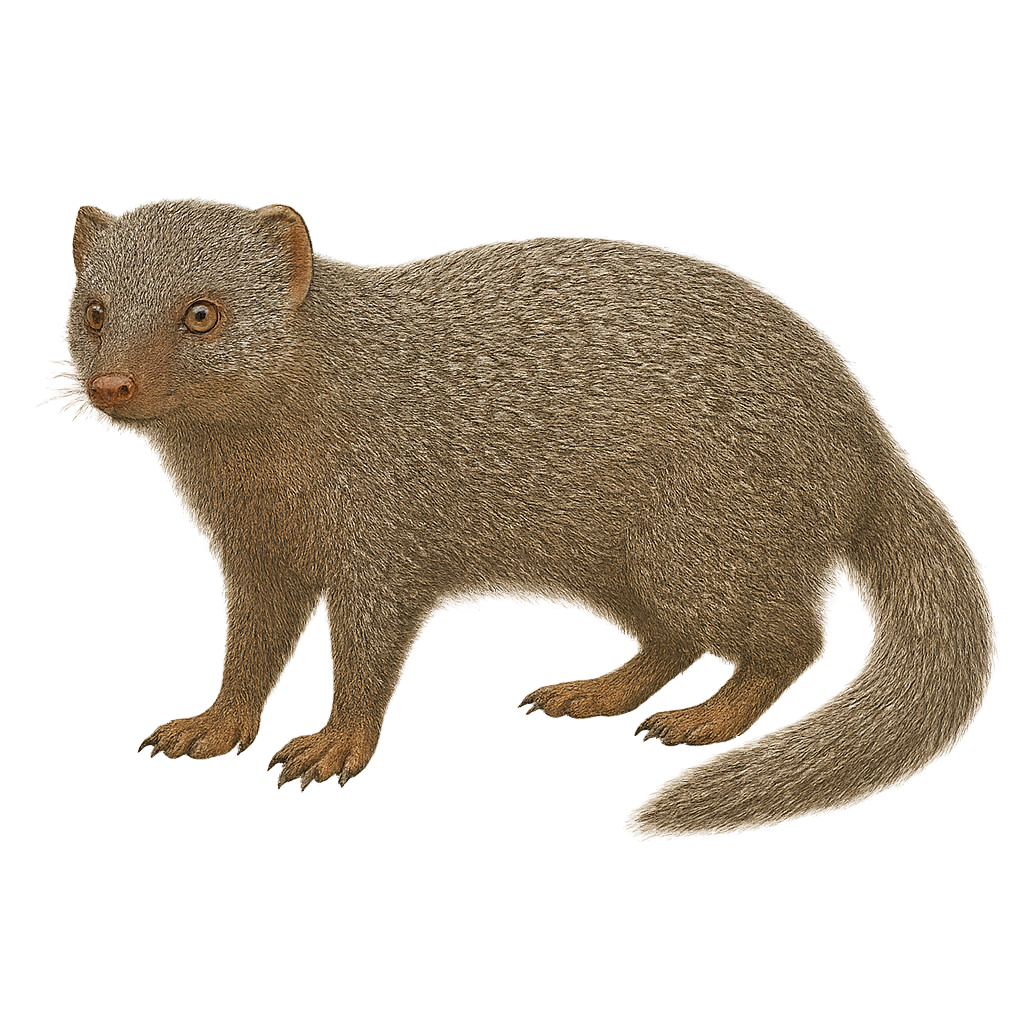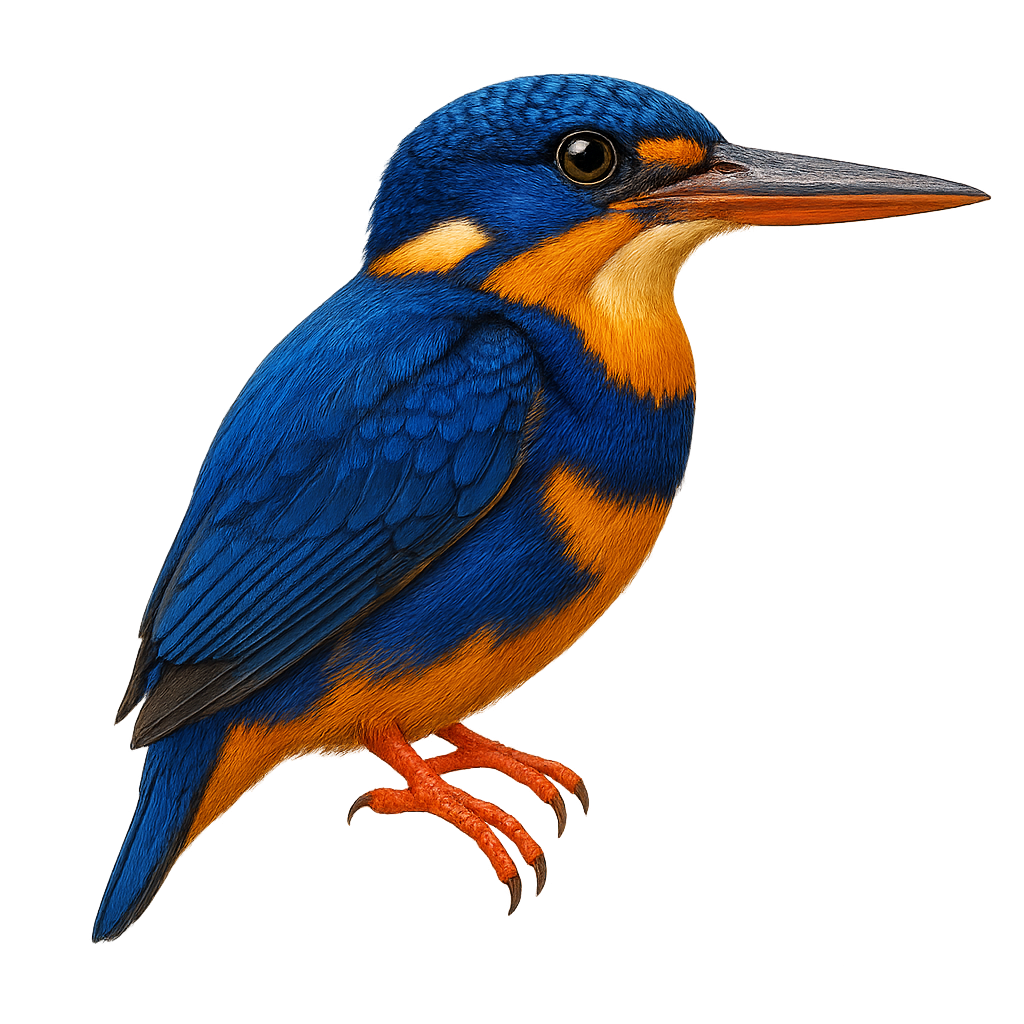The Calotes mystaceus, or Indochinese Forest Lizard, is an arboreal lizard native to Southeast Asia, particularly found in Thailand, Myanmar, and Laos. It is recognizable by its vibrant coloration, often green with shades of blue and red, and its prominent scales around the head resembling a mustache. This lizard typically measures between 25 and 35 cm in length, including the tail. It prefers tropical rainforests and wooded areas, where it primarily feeds on insects and small invertebrates. Active during the day, it is often seen basking in the sun on branches or tree trunks. Although relatively common in its natural habitat, it can be difficult to spot due to its effective camouflage.
The Indian Spotted Eagle, or Clanga hastata, is a medium-sized raptor primarily found in the northern plains of India and parts of Southeast Asia. It is characterized by its dark brown plumage with lighter spots and broad, rounded wings. This eagle prefers open habitats such as grasslands and agricultural areas, where it can easily spot its prey. It primarily feeds on small mammals, birds, and reptiles. Although often solitary, it can be seen in small groups during migration. Its population is declining due to habitat loss and pollution.
The Ibisbill, Ibidorhyncha struthersii, is a unique and fascinating bird, easily recognizable by its long, downward-curved red bill and its grey and white plumage. It primarily inhabits mountain rivers and gravel beds in Central Asia, particularly in the Himalayan regions. This bird is particularly adapted to its environment, using its distinctive bill to probe into pebbles and sediments in search of food, mainly aquatic insects and small crustaceans. Although discreet, the Ibisbill is often observed in small groups or pairs, especially during the breeding season. Its ability to blend into its rocky environment sometimes makes it difficult for observers to spot.
The Imperial Snipe, or Gallinago imperialis, is a rare and elusive bird mainly found in the Andes. It is characterized by its dark brown plumage with intricate patterns that allow it to blend into its marshy surroundings. Its long, straight bill is perfectly adapted for probing the ground in search of worms and insects. This bird is most active at dawn and dusk, making it difficult to spot. The Imperial Snipe is often solitary, although it can sometimes be seen in small groups. It prefers wetland habitats and peat bogs located at high altitudes, between 2000 and 3000 meters. Its population is declining, mainly due to the loss of its natural habitat.
The Iberian Ibex is a large herbivore native to the mountains of the Iberian Peninsula, primarily in the mountain ranges of the Pyrenees and the Sierra de Gredos in Spain. It is easily recognizable by its massive, backward-curved horns and brown and gray coat. This ibex lives in rocky, steep terrain, where it feeds mainly on grasses, woody plants, and alpine vegetation.
The Iberian Ibex is a social animal that forms family groups consisting of females and young, while adult males, called "ibex," form separate groups. The species nearly went extinct in the 20th century due to overhunting, but thanks to conservation efforts, its population has been restored in several regions of Spain. However, the Iberian Ibex remains vulnerable to habitat loss and human disturbances.
The Indian Grey Hornbill, or Ocyceros birostris, is a small grey hornbill native to wooded and semi-open areas of the Indian subcontinent. It is identified by its uniform grey plumage, black tail with white edges, and a curved two-toned bill—orange at the base and black at the tip. Found in dry forests, farmlands with trees, and even urban areas in India and Sri Lanka, it is usually seen in pairs or family groups, calling with sharp, screeching sounds. Its diet includes fruits, insects, and occasionally small vertebrates. The Indian Grey Hornbill is common and adapts well to human-altered landscapes.
The Indian Spot-billed Duck, Anas poecilorhyncha, is a medium-sized waterfowl known for its distinctive bill marked with yellow and black spots. Its plumage is primarily brown with lighter shades on the belly and darker patterns on the back. The wings feature a green iridescent speculum, visible in flight. This duck primarily inhabits wetlands, lakes, and rivers in South and Southeast Asia. It is often seen in small groups, feeding on aquatic plants, insects, and small invertebrates. Although generally not very shy, it can be suspicious in areas where it is hunted.
The Indo-Pacific bottlenose dolphin measures 2–3 m and weighs 150–230 kg, with a light grey streamlined body and a short beak. It forms small coastal groups in shallow tropical and subtropical waters, feeding on fish, cephalopods and crustaceans. Highly social and playful, it often interacts with boats, performing spectacular leaps and bow-riding.
The Irrawaddy dolphin, Orcaella brevirostris, is a freshwater and coastal cetacean known for its rounded forehead and lack of a distinct beak. It typically measures between 2 and 2.7 meters and weighs up to 150 kg. Its skin is light gray with a paler belly. This dolphin is often seen in small groups and is noted for its social and curious behavior. It can swim in both freshwater and saltwater, frequenting estuaries, rivers, and coasts. Unfortunately, it is threatened by habitat degradation, accidental capture in fishing nets, and pollution. Its conservation is crucial to maintaining the balance of the aquatic ecosystems it inhabits.
The Indian Giant Squirrel, Ratufa indica, is an impressive rodent known for its size and vibrant colors. It can grow up to a meter long, including its tail, and sports a coat with varying shades from brown to black, with hints of cream and rust. This squirrel is arboreal, spending most of its time in the trees of India's tropical rainforests. It primarily feeds on fruits but also consumes flowers, bark, and insects. Its behavior is generally solitary, although it can be seen in pairs during the breeding season. With its long tail, it maintains perfect balance when leaping from tree to tree.
The Indian Nightjar is a fascinating bird, primarily nocturnal, known for its cryptic plumage that allows it to blend seamlessly into its surroundings. It is often seen in open forests, clearings, and shrublands. Its song, a soft and repetitive trill, often resonates at dusk and dawn. This bird primarily feeds on insects, which it catches in flight with its wide beak and sensitive bristles. Although discreet, it plays a crucial role in ecosystem balance by regulating insect populations. Its breeding season varies by region, but it is generally monogamous and lays eggs directly on the ground without building a nest.
The Indian palm squirrel, scientifically known as Funambulus palmarum, is a small rodent native to the Indian subcontinent. It is easily identifiable by its three distinct white stripes running along its back, contrasting with its grey-brown fur. These squirrels are primarily arboreal and are often found in gardens, parks, and wooded areas. They are diurnal and spend most of their day foraging for food, mainly feeding on fruits, nuts, and occasionally insects. Their behavior is generally not very shy, making them quite visible in urban areas. Although often solitary, they can be seen in small groups, especially during the breeding season.
The Iceland Gull, or Larus glaucoides, is a medium-sized seabird primarily found in Arctic and subarctic regions. It is notable for its pure white plumage and pale grey wings, lacking the black markings typical of many other gulls. During the breeding season, it nests on coastal cliffs and rocky islands, often in mixed colonies with other gull species. Its diet is varied, including fish, crustaceans, and human waste. As a migratory bird, it winters further south along the Atlantic coasts of Europe and North America. Its flight is graceful and powerful, and it emits distinctive high-pitched calls.
The Boana picturata, commonly known as the Imbabura Treefrog, is a species of tree frog found primarily in the humid tropical forests of South America. It is distinguished by its bright colors and unique patterns that allow it to blend effectively into its natural environment. This frog is primarily nocturnal, meaning it is active at night. It mainly feeds on insects and plays a crucial role in controlling insect populations in its habitat. Although its conservation status is not concerning, the destruction of its natural habitat poses a potential threat to its long-term survival.
The Indian pond heron is a small heron of about 45 cm, with buff-brown plumage and white flight feathers visible in flight. It inhabits freshwater wetlands, rice paddies and riverbanks, standing motionless before striking fish, amphibians and insects with a quick bill thrust. During breeding, it builds a stick nest in waterside shrubs and the male performs courtship displays by raising neck feathers.
The icterine warbler is a small migratory passerine, 11–13 cm long, with olive-green upperparts and pale yellow underparts, distinguished by a bright yellow supercilium. It inhabits open woodlands and edges, feeding mainly on insects and spiders gleaned from foliage or caught in flight. During breeding, males perform singing display flights and sing from elevated perches to attract females and defend territories.
The Andean Ibis, or Theristicus branickii, is a large wading bird identified by its pale gray plumage, orange-brown head and neck, long curved black bill, and black-tipped wings. It inhabits the high Andean plateaus between 3,000 and 5,000 meters, primarily in Peru, Bolivia, Ecuador, and northern Chile. Found in high-altitude grasslands, wet meadows, and marshy pastures, it feeds on invertebrates, larvae, and small vertebrates, probing the ground with its long bill. Usually solitary or in small groups, it is often seen walking in open landscapes. The species is generally stable, though reliant on the preservation of Andean ecosystems.
Leucostethus argyrogaster is a species of amphibian belonging to the Dendrobatidae family. It is primarily found in the lowland tropical rainforests of South America, particularly in Peru and Ecuador. This frog is distinguished by its silver belly, contrasting with its brown or olive-green back. It typically measures between 2 and 3 cm in length. It is diurnal and spends most of its time foraging for food, mainly insects. Its skin secretes toxins, a common trait among its family members. Although its conservation status is not of concern, it is threatened by deforestation and habitat loss.
The Impala is a medium-sized, slender, and graceful antelope, easily recognizable by its elegant, curved horns and its light brown to reddish coat, with a white belly and tail. It stands about 70 to 90 cm at the shoulder, with a total length of 1.2 to 2 meters, and weighs between 40 and 75 kg. Males have long, fine, lyre-shaped horns that can reach up to 90 cm in length, while females, which lack horns, are generally smaller. The Impala primarily inhabits savannas and woodland grasslands in East and Southern Africa, where it forms complex social groups. It primarily feeds on grass, but may also eat leaves and fruits when grass is less abundant. The Impala is an excellent runner, capable of making long leaps to escape its predators. Although the Impala is quite widespread, it is vulnerable to habitat loss and excessive hunting.
The Indri is one of the largest lemurs in Madagascar, known for its piercing call that echoes through the forest. With its thick fur and long arms, it primarily inhabits the tropical forests of eastern Madagascar. The Indri feeds mainly on leaves, fruits, and flowers, and remains loyal to a small territory which it defends with its songs. Due to deforestation and poaching, the Indri is critically endangered.
The Indian leopard is a striking big cat with a golden coat covered in black rosettes. Highly adaptable, it inhabits a wide range of environments—from forests and hills to open plains and even areas near cities across India. Mostly nocturnal and solitary, it preys on a variety of animals. Within this subspecies, melanistic individuals—known as black panthers—do exist. These leopards have a genetic mutation that gives them an entirely black appearance. While rare, black leopards are regularly observed in certain regions, particularly in the humid forests of the Western Ghats.
The Iberian Hare is a rodent endemic to the Iberian Peninsula, primarily found in Spain and Portugal. It measures between 50 and 60 cm in length, with a tail of 6 to 9 cm, and weighs between 2 and 3 kg. This hare is smaller than its European cousin, with a lighter coat, often gray-brown or light brown, with darker markings on the back and a paler hue on the belly. The Iberian Hare primarily inhabits open plains, oak forests, and meadows, where it feeds on vegetation, mainly grasses, roots, leaves, and sometimes young shrub shoots. It is a crepuscular and nocturnal animal, most active at dusk and during the night. While the species is not immediately endangered, it is threatened by habitat loss, hunting, and the introduction of predators such as foxes and dogs.
The Canis lupus pallipes, commonly known as the Indian wolf, is a subspecies of the gray wolf found primarily in the semi-arid regions of India and Pakistan. This medium-sized wolf is characterized by its lighter and shorter coat, adapted to hot climates. It typically lives in small packs and preys on a variety of animals, from small mammals to birds. Although an efficient predator, it is threatened by habitat loss and human conflict. Its adaptability to various environments demonstrates its resilience, yet its population remains vulnerable.
The Italian wolf, or Canis lupus italicus, is a subspecies of the gray wolf, mainly found in the Apennines and Italian Alps. It is characterized by its medium size, dense coat, and color ranging from gray to brown. This predator plays a crucial role in the ecosystem by regulating ungulate populations. Although it was threatened with extinction in the 20th century, conservation efforts have led to an increase in its population. The Italian wolf lives in packs, with a well-defined social hierarchy. It is primarily nocturnal and crepuscular, hunting in groups to optimize its chances of success. Its communication relies on vocalizations, visual, and olfactory signals.
The Iberian Lynx is a medium-sized cat endemic to the Iberian Peninsula, primarily found in southern Spain and Portugal. It measures about 80 to 100 cm in length, with a tail of about 10 to 15 cm, and weighs between 8 and 14 kg, with males generally being larger than females. Its coat is pale beige to light brown, with darker spots on the back and flanks, and a lighter underside. It has pointed ears, adorned with tufts of black fur, and a small beard on its chin. The Iberian Lynx primarily inhabits wooded and semi-desert areas, where it hunts prey such as hares, birds, and especially ungulates like deer and rabbits, which are its main food source. This solitary predator is highly territorial and uses calls and claw marks to demarcate its territory. Although it is one of the most endangered cats in the world, conservation efforts have helped increase its population, but it remains vulnerable to habitat loss and the decline of its natural prey.
The Indian Brown Mongoose, Herpestes fuscus, is a small carnivorous mammal native to the Indian subcontinent. It is characterized by its dark brown fur and slender body. Measuring about 50 to 60 cm in length, it has a bushy tail that accounts for nearly half of its total length. This species is primarily terrestrial and feeds on small animals, insects, and occasionally fruits. It is known for its ability to hunt snakes due to its agility and speed. The brown mongoose typically inhabits a variety of environments, from tropical forests to shrublands. Although often solitary, it can sometimes be seen in small family groups.
The Indian grey mongoose, Herpestes edwardsii, is a small carnivorous mammal native to the Indian subcontinent. It is recognizable by its grayish fur and bushy tail. Measuring between 36 and 45 cm, it typically weighs between 0.9 and 1.7 kg. Agile and fast, it is famous for its ability to hunt and kill venomous snakes, thanks to its speed and sharp reflexes. It inhabits various environments, from forests to agricultural areas, and adapts well to human-modified landscapes. The Indian grey mongoose is a diurnal animal, often seen foraging during the day.
The Indigo-banded Kingfisher, Ceyx cyanopectus, is a fascinating bird found in the humid tropical forests of the Philippines. It is distinguished by its striking plumage, with a bright blue head and back, contrasting with a white chest and black wings. Measuring about 16 cm, it is known for its robust beak and short legs. This kingfisher is an agile predator, primarily feeding on small fish and insects, which it captures by diving with precision. Although often solitary, it can be observed in pairs during the breeding season. Its presence is an indicator of the health of the aquatic ecosystems it inhabits.
The Italian Sparrow, Passer italiae, is a small, robust bird often mistaken for the House Sparrow. It features brown and grey plumage, with a dark brown cap and distinctive white cheeks. Males have a more pronounced black bib than females. This passerine is mainly sedentary, inhabiting urban and rural areas in southern Europe, especially in Italy and Corsica. It is omnivorous, feeding on seeds, insects, and crumbs. The Italian Sparrow is very social, often forming large flocks. It nests in cavities of buildings or trees, using various materials to build its nest.
The Indian pangolin is a nocturnal insectivorous mammal, 40–65 cm excluding tail, covered in brown keratinous scales with a long prehensile tail. It inhabits forests, scrublands, and agricultural areas of India, Pakistan, and Sri Lanka, feeding primarily on ants and termites with its long sticky tongue. Largely solitary, it digs shallow burrows or shelters in abandoned termite mounds.


